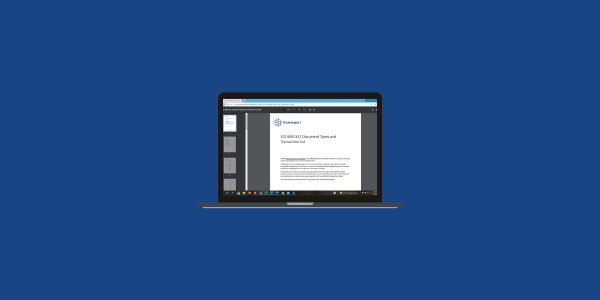An EDI 180 Return Merchandise Authorization and Notification, is used by retailers and suppliers during the returns process. It can be used as both a request and an authorization, as well as a notification document. For example retailers use the EDI 180 to request authorization for a merchandise return, as in the case of damaged or defective products. Retailers can also use this document to notify suppliers about consumer returns to their stores.
Upon receiving an EDI 180 the receiver will reply with an EDI 997 Functional Acknowledgement
This electronic document complies with the ANSI X12 EDI specification.
All EDI documents are securely encrypted in transit, allowing trading partners to send sensitive data safely. Using the EDI 180 can help streamline the returns process for both retailers and suppliers.
Reduced Manual Effort & Elimiated Errors
Improve Cash Flow
Returns are processed and reconciled quickly
An EDI 180 Return Merchandise Authorization and Notification contains information about a merchandise return. The EDI 180 can be used for the following purposes:
This transaction include key information about a return. Because EDI 180 can be sent bi-directionally for multiple types of communications, the document also needs to specify its specific use case. Key data that may be included on EDI 180:
ANSI ASC X12
The American National Standards Institute (ANSI) chartered the Accredited Standards Committee (ASC) X12 to develop uniform standards for inter-industry electronic exchange of business transactions, namely electronic data interchange. ASC X12 also contributes to UN/EDIFACT messages that are used widely outside of the United States.
Experience the effortless power of Commport’s Integrated EDI solution today!
Say goodbye to complicated and costly software installations, and forget about the need to be an EDI expert or create your own mappings. Our seamless solution adapts effortlessly to your business’s growth, making adding new customers a breeze.
With fast and reliable translation, you can rest assured that your EDI processes are in safe hands, allowing you to focus on what truly matters – your business.
1. Easy integration with any trading partner 2. Commport EDI solutions are scalable as your business grows 3. Affordable pricing and pay-as-you-go plans available 4. Dedicated world-class customer support 5. 100% EDI compliance guaranteed 6. Trusted by 6000+ customers
Take the next step towards efficiency and success with Commport. Get a free quote today!








We got the goods to help you utilize your EDI services effectively. We encourage you to explore our available resources below



Unlock the full potential of your supply chain with our comprehensive EDI Buyer's Guide — your first step towards seamless, efficient, and error-free transactions